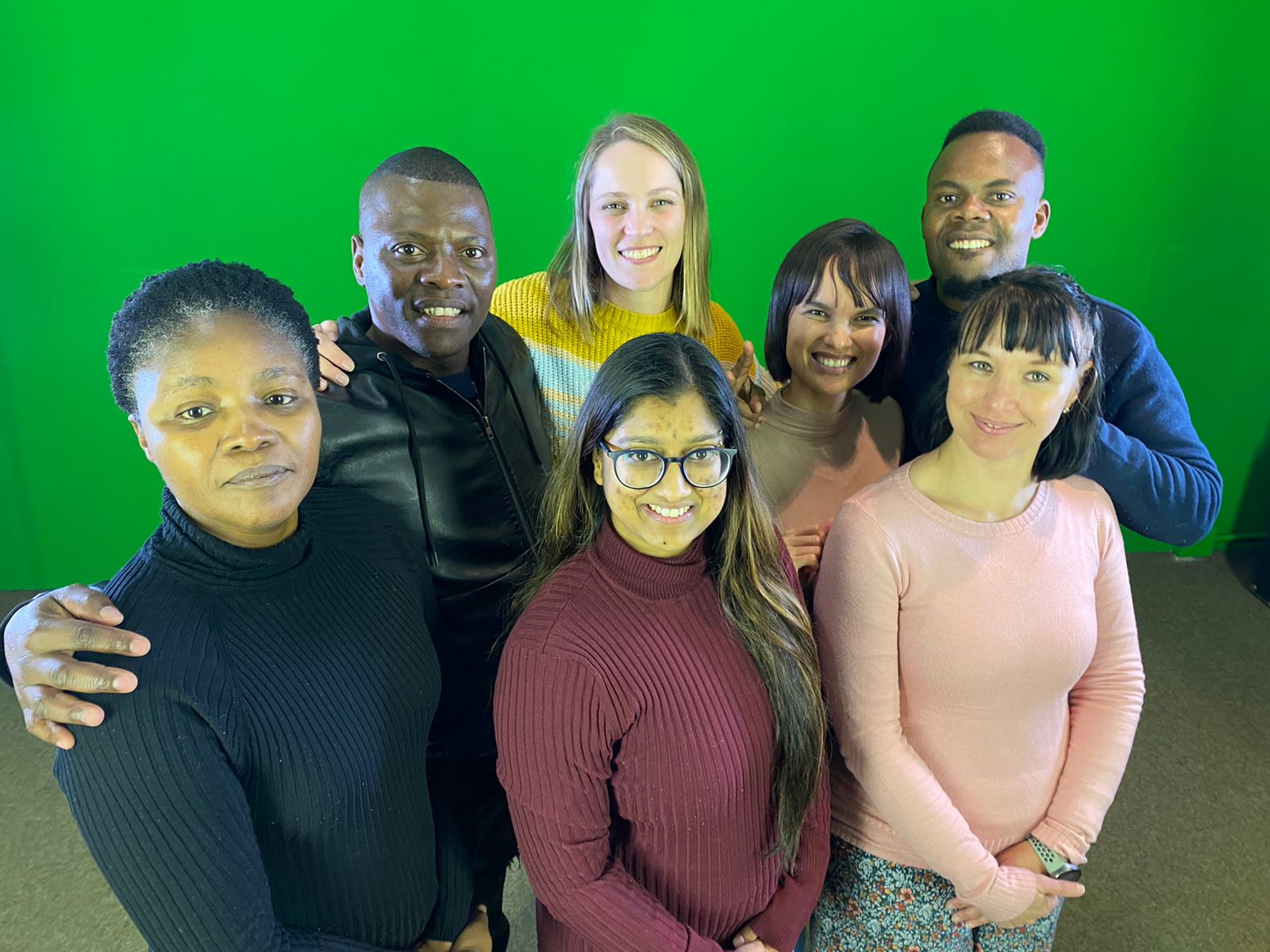A social impact project by Stellenbosch University (SU) and the Deaf community to advance literature in sign language and address the plight of deaf communities with limited work and training opportunities was recently completed.
The University and the Deaf community's efforts coincide with the current Deaf Awareness Month as well as the recent declaration of South African Sign Language (SASL) as the country's 12th official language.
The project, entitled 'Creating Teaching Material for Hearing Students Learning SA Sign Language: Workshop for Deaf Community Storytellers', resulted in building the capacity of students, lecturers and Deaf community members.
The Faculty of Arts and Social Sciences created teaching material in sign language in collaboration with four deaf community members who were, at the same time, trained to use sign language to tell written stories and make video recordings of the storytelling.
Alongside staff members from the Department of General Linguistics and the Language Centre, storytellers Ms Yuvini Gounden, Mr Terneil Christians, Mr Christopher Galada and Ms Lazyja le Roux – all hailing from Worcester and Stellenbosch – created videos of twenty stories in South African Sign Language (SASL).
This teaching material will soon be introduced to hearing students who enrolled on the beginner's course of the SASL academic programme.

The project was driven by Ms Vanessa Reyneke, project coordinator of Learning and Teaching Support Material for SASL, and her colleague, Ms Susan (Modiegi) Njeyiyana, junior lecturer in SASL. Other staff members who participated were Dr Kate Huddlestone (General Linguistics), Dr Simone Conradie (General Linguistics), Mr Gert Erasmus (Language Centre), Ms Marsanne Selzer (Language Centre) and Ms Zulfah Shabodien (General Linguistics).
The project commenced earlier this year thanks to funding from SU's Social Impact Funding Committee and the collaboration of SU staff and community members, Reyneke said.
Prior to creating the videos, the participants attended a workshop where they were trained in videography, studio preparation, translation from text to SASL and the best storytelling techniques.
According to Njeyiyana, who is deaf and lectures SASL, the engagement between the deaf storytellers and other participants was an insightful and mutual learning experience, especially because of the diversity in dialects and cultures present at the workshop. “Great group work took place, and together we selected the appropriate signs to tell the story. Students will learn about the different dialects and cultures in the Deaf communities," Njeyiyana said.
An empowering experience for participants
Reflecting on their project participation, the storytellers appreciated their training and skills development. They agreed that they felt empowered by what they had learned and their skills.
“Now I understand how to translate written text to sign language. I would like to train myself further and improve my skills so that I can use language properly when teaching at a school for the Deaf," said Galada.
Gounden agreed that he learned a great deal. “Especially about what equipment I need in a studio, and what I need to do before we start filming. I will use this in the future."
The outcome of the project
According to Reyneke, the storytellers' diverse cultural backgrounds and dialects contributed to the richness and authenticity of the teaching material. “They succeeded in creating content that is thematically age-appropriate for young adults but in terms of vocabulary and grammatical complexity, it is simple enough to be understood and enjoyed by adult beginner learners of sign language," Reyneke said.
The short stories of not more than eight sentences are about student life and the everyday activities on campus. The stories are only on video.
The storytellers have created straightforward and relevant stories such as:
The anxiety and stress of a student
I have so much to do!
I have to attend lectures, do my homework and study for tests!
I have to buy electricity, do the laundry and go to the library!
I feel so stressed and anxious!
Then I realise: I can only do one thing at a time.
I take a deep breath, smile and walk to my next class.
Balance
I spent my first year at university going to parties.
I never went to class or studied.
I had to repeat the whole year.
I spent my second year at university studying.
I never went out or relaxed.
I burned out and got sick.
This year, I will take better care of myself and find balance.
Huddlestone, Chair of the General Linguistics department, said the stories form part of an SU module, and currently, there are no plans to make these videos available to the public.
According to Huddlestone, the project aligns with the United Nations' Sustainable Development Goals 2030 and the University's aspirations of capacity building, improving educational outcomes and youth development.
“There is a dearth of learning and training opportunities for young deaf adults. The deaf community is still largely excluded from development initiatives. Their schooling typically renders them ill-prepared for post-school study, and tertiary educational institutions are inaccessible for them due to language barriers," she said.
According to Reyneke and Njeyiyana, many more deaf people could benefit from this project. Although they would like to continue with the project and create teaching material with deaf persons for other SASL modules, they are currently restricted by a lack of funding.
Group picture: The group of storytellers and staff together at a work session. Back row: Christopher Galada, Vanessa Reyneke (SU staff), Terneil Christians, Alex Nyawo.
Front row: Susan Njeyiyana (SU staff), Yuvnin Gounden, Lazyja le Roux
Photographer: Stefan Els

